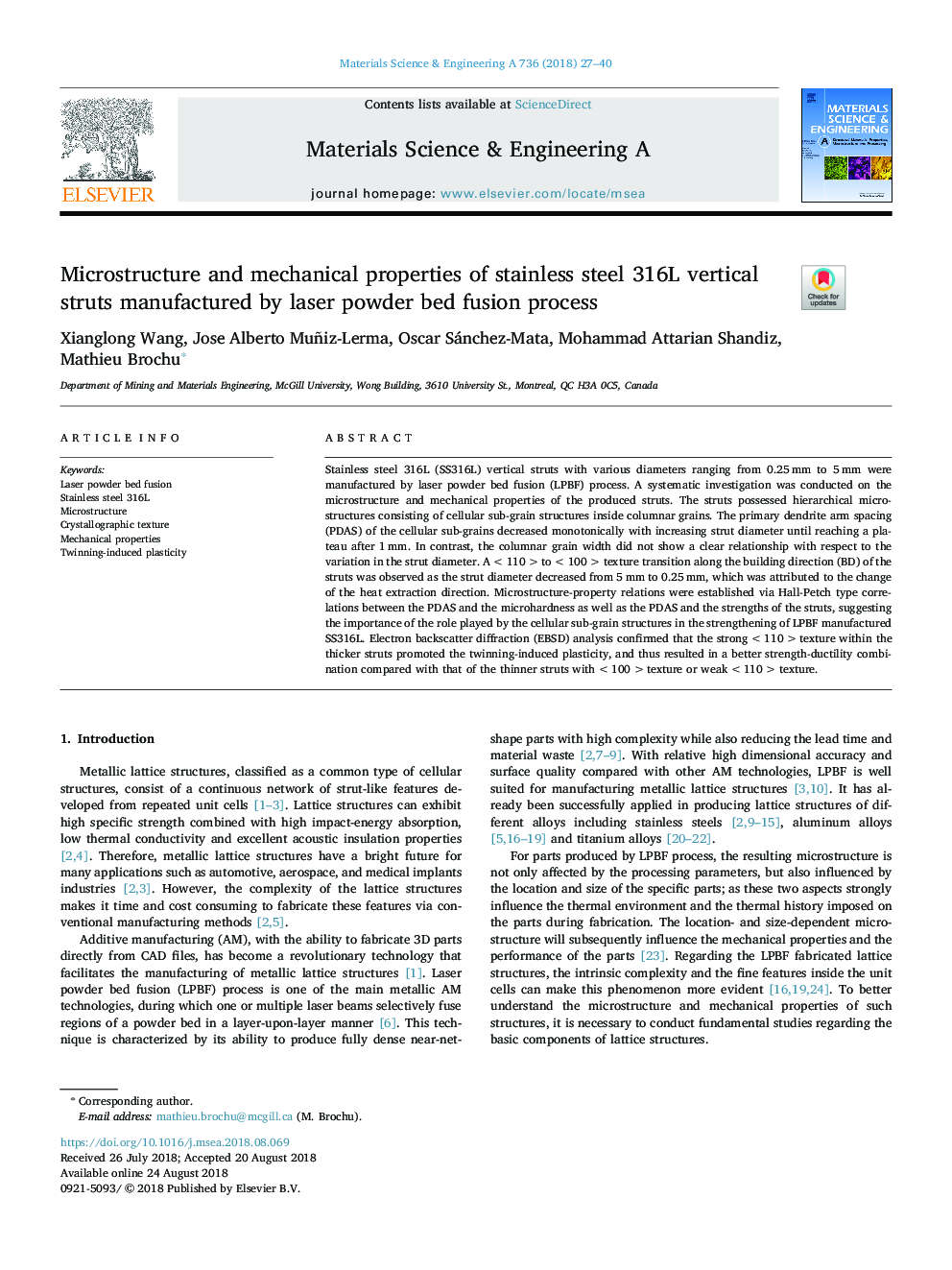| Article ID | Journal | Published Year | Pages | File Type |
|---|---|---|---|---|
| 8955429 | Materials Science and Engineering: A | 2018 | 14 Pages |
Abstract
Stainless steel 316L (SS316L) vertical struts with various diameters ranging from 0.25â¯mm to 5â¯mm were manufactured by laser powder bed fusion (LPBF) process. A systematic investigation was conducted on the microstructure and mechanical properties of the produced struts. The struts possessed hierarchical microstructures consisting of cellular sub-grain structures inside columnar grains. The primary dendrite arm spacing (PDAS) of the cellular sub-grains decreased monotonically with increasing strut diameter until reaching a plateau after 1â¯mm. In contrast, the columnar grain width did not show a clear relationship with respect to the variation in the strut diameter. A <110> to <100> texture transition along the building direction (BD) of the struts was observed as the strut diameter decreased from 5â¯mm to 0.25â¯mm, which was attributed to the change of the heat extraction direction. Microstructure-property relations were established via Hall-Petch type correlations between the PDAS and the microhardness as well as the PDAS and the strengths of the struts, suggesting the importance of the role played by the cellular sub-grain structures in the strengthening of LPBF manufactured SS316L. Electron backscatter diffraction (EBSD) analysis confirmed that the strong <110> texture within the thicker struts promoted the twinning-induced plasticity, and thus resulted in a better strength-ductility combination compared with that of the thinner struts with <100> texture or weak <110> texture.
Keywords
Related Topics
Physical Sciences and Engineering
Materials Science
Materials Science (General)
Authors
Xianglong Wang, Jose Alberto Muñiz-Lerma, Oscar Sánchez-Mata, Mohammad Attarian Shandiz, Mathieu Brochu,
